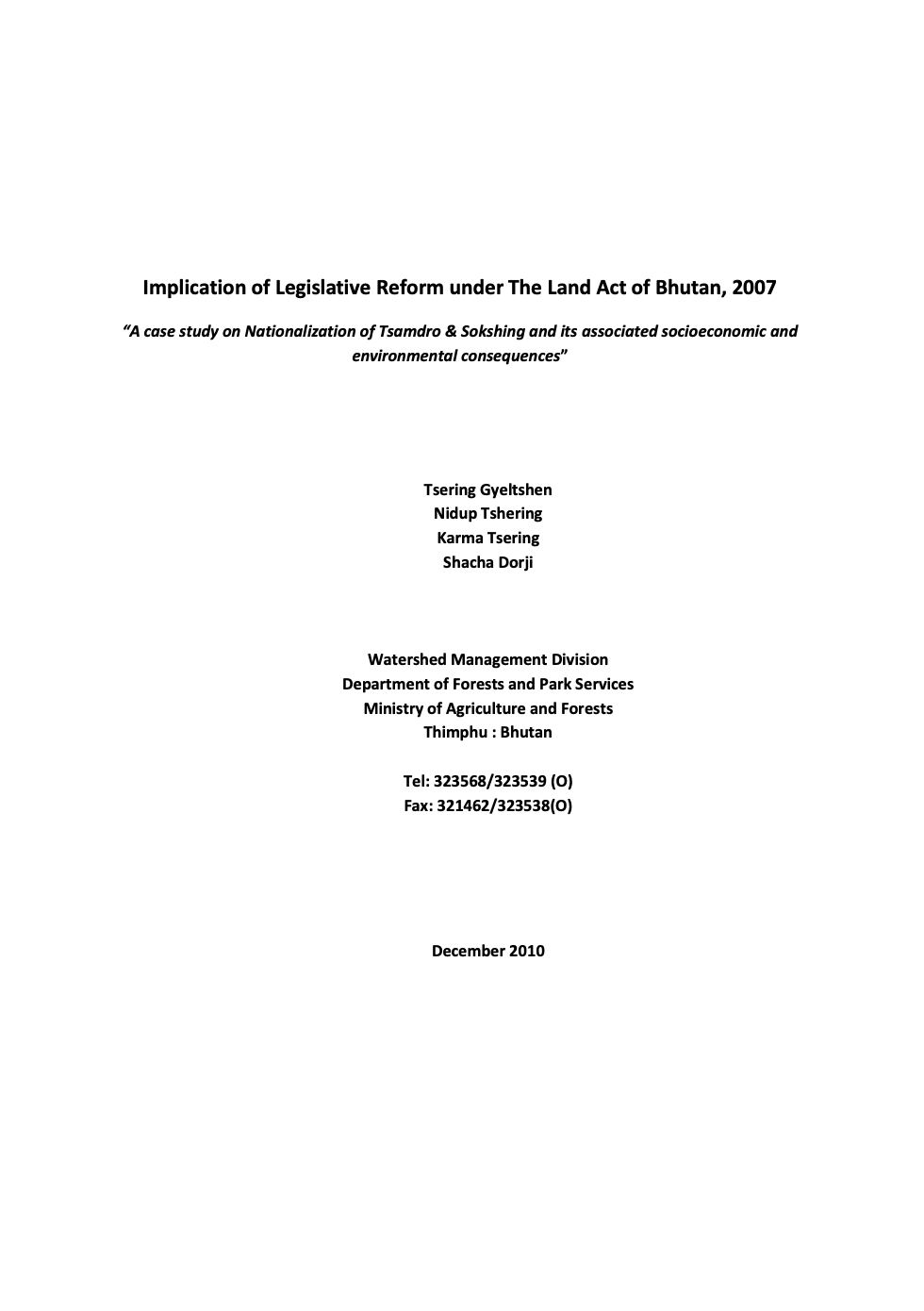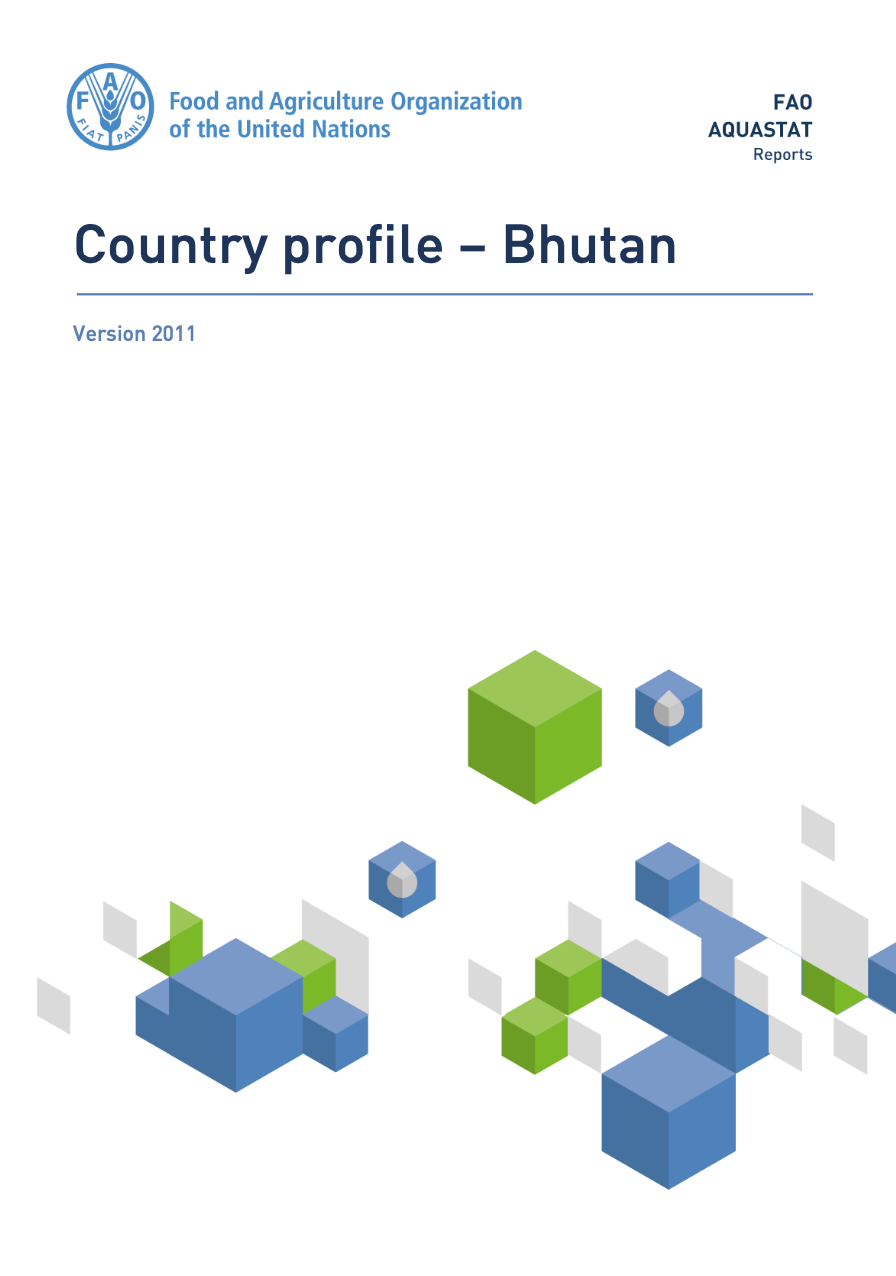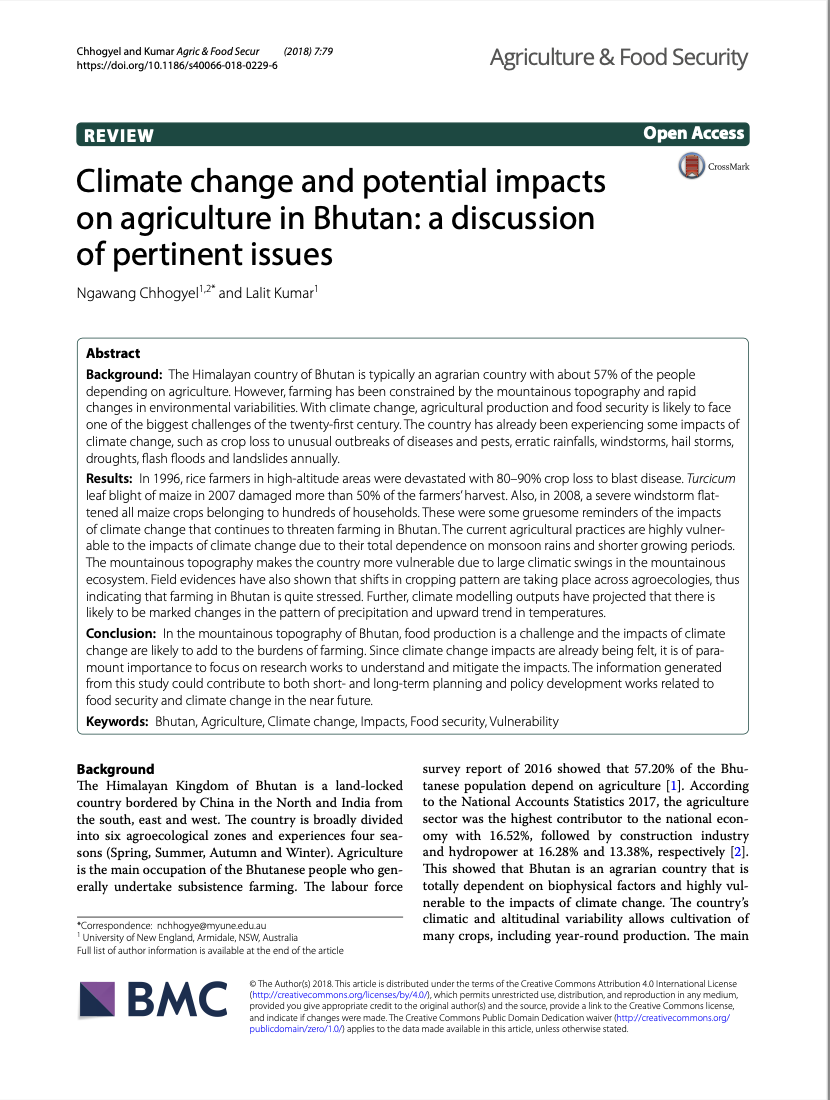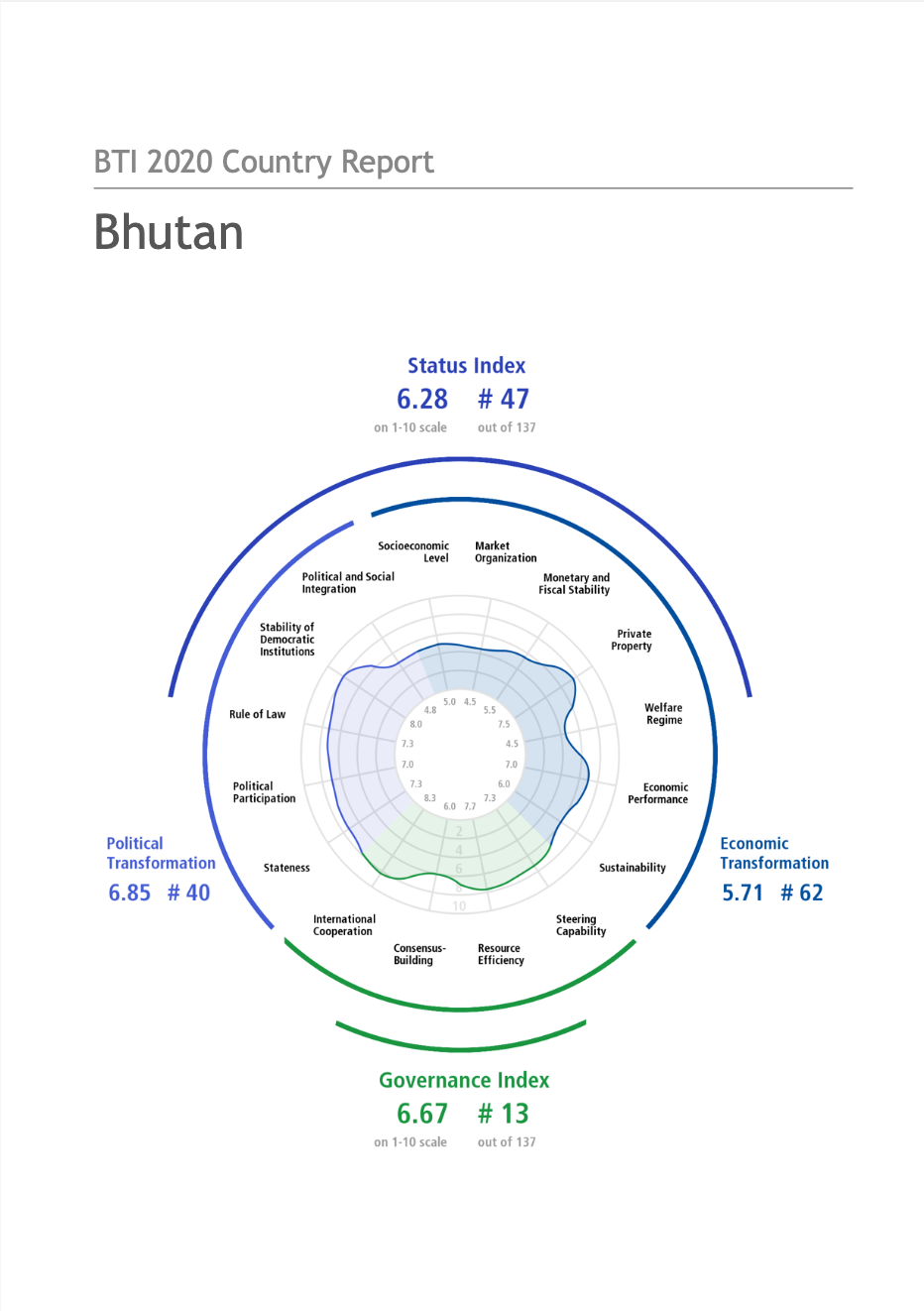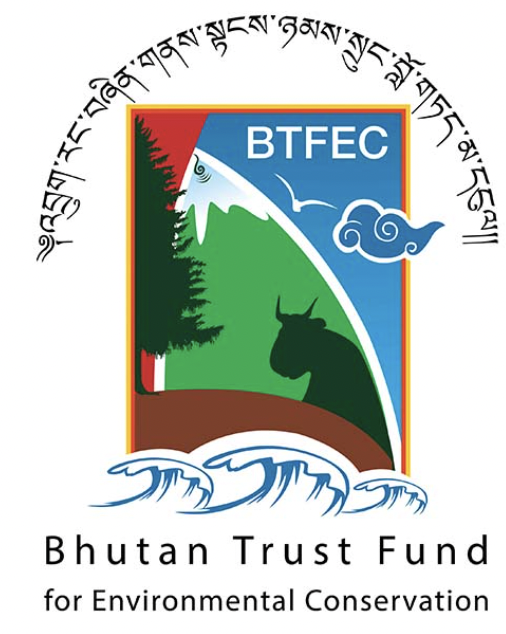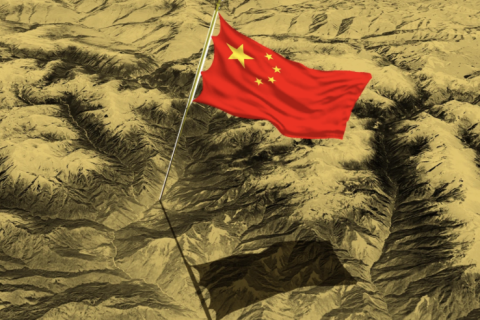
Topics and Regions
Daniel Hayward (UK) worked around Europe for 15 years as a dancer, choreographer and dance writer. Following retraining in sustainable development, he now works as an international development researcher, focused on land relations, agricultural value chains, gender, and migration. As well as working for Land Portal, Daniel is the project coordinator of the Mekong Land Research Forum at Chiang Mai University, and consultant for a variety of local and international NGOs and research institutes.
Details
Location
Contributions
Displaying 331 - 340 of 835Implication of Legislative Reform under The Land Act of Bhutan, 2007: A case study on Nationalization of Tsamdro & Sokshing and its associated socioeconomic and environmental consequences
Given its seemingly beneficial aspects to socioeconomic development and environmental well-being, the legislative reforms initiated under the Land Act of Bhutan, 2007 have raised so much consternation as well as hope in the minds of the Bhutanese people who either depend on livestock husbandry or leasing out such rights to others with livestock and compensated with payment in cash or kind in the form of livestock products.
Country profile – Bhutan
This country profile is a summary of key information that gives an overview of the water resources and water use at the national level. It can support water-related policy and decision makers in their planning and monitoring activities as well as inform researchers, media and the general public.
Climate change and potential impacts on agriculture in Bhutan: a discussion of pertinent issues
Background: The Himalayan country of Bhutan is typically an agrarian country with about 57% of the people depending on agriculture. However, farming has been constrained by the mountainous topography and rapid changes in environmental variabilities. With climate change, agricultural production and food security is likely to face one of the biggest challenges of the twenty-first century.
BTI 2020 Country Report: Bhutan
Bhutan’s democracy consolidated further following the third elections to National Council and National Assembly in 2018. In the primary round of National Assembly elections, voters favored a newly established third party, Druk Nyamrup Tshogpa (DNT), followed by the opposition in the last parliament, Druk Phuensum Tshogpa (DPT). The incumbent People’s Democratic Party (PDP) failed to advance to the general round.
Evaluation of Sustainable Land Management and Innovative Financing to Enhance Climate Resilience and Food Security in Bhutan
Bhutan Trust Fund for Environmental Conservation (BTFEC) in collaboration with National Soil Service Centre (NSSC), and Gross National Happiness Commission (GNHC) has undertaken the Evaluation and Learning (E&L) activity with financial support from Climate Investment Funds (CIF) for the project ‘Evaluation of Sustainable Land Management (SLM) and innovative financing to enhance climate resilience and food security in Bhutan’.
Bhutan Trust Fund for Environmental Conservation
We are the world’s first environmental trust fund, established in 1992 as a collaborative venture between the Royal Government of Bhutan, United Nations Development Program, and World Wildlife Fund. An endowment of US$20 million was set up as an innovative mechanism to finance conservation programs over the long term in Bhutan. Donors to the trust fund include the World Wildlife Fund and the Global Environment Facility, the governments of Bhutan, Denmark, Finland, the Netherlands, Norway and Switzerland.
Creative community-based policies in Bhutan reveal benefits of planted forests
Main photo: The yak (Bos grunniens and Bos mutus) is a long-haired bovid found throughout the Himalaya region of south Central Asia, the Tibetan Plateau and as far north as Mongolia and Russia. (Used under Creative Commons license) Flickr/Arian Zwegers
An innovative community-based forest management policy has resolved a long-simmering land-use conflict between migratory yak herders and sedentary residents in a remote area of Bhutan.
Land price in Thimphu touch Nu 1 million a decimal (40.47 sqm)
Many look beyond the city for land
Short of money to renovate her ancestral house in Punakha, a villager in Babesa sold 50 decimals of her wetland. With Nu 3,000 a decimal, it was a good deal in 1996 when construction on wet land was not allowed. The land, which a Thimphu hotelier bought then had become a prime area today. Price for a decimal has reached Nu 1.5 million (M).
Why Bhutan's Sakteng wildlife sanctuary is disputed by China
Sandwiched between China and India, the tiny Himalayan nation of Bhutan is feeling the squeeze as its giant neighbours square up for supremacy.
A close ally of India, Bhutan got a shock when China made sudden new claims in the summer - over a wildlife sanctuary in the east of the country, on land that had not been considered disputed.
Most Bhutanese commentators don't want to discuss this in detail, but many believe Beijing is trying to drag the Buddhist majority nation - population 750,000 - into the territorial stand-off with India.

